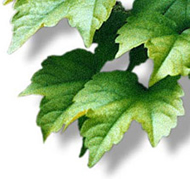



Description:
The snapping turtle normally has a shell length ranging from 8 -18 1/2"and has a tail nearly as long as the shell. The tail has saw-toothed keels on it. The shell ranges in color from dark brown to tan and can even be black in some individuals. Snapping turtles have characteristic tubercles on their necks and legs. Plastrons of snapping turtles are very small and leave much of the extremities exposed. Snapping turtle necks, legs, and tails have a yellowish color and the head is dark in color.
Distribution:
The snapping turtle's range stretches from S. Alberta and east to Nova Scotia in the north, extending south all the way to the Gulf of Mexico and into central Texas.
Habitat
Snapping turtles only live in fresh or brackish water. They prefer water bodies with muddy bottoms and abundant vegetation because concealment is easier.
Reproduction
Mating takes place from April to November. In the mating process, the male positions himself on top of the female's shell by grasping the shell with his claws. He then curves his tail until his vent contacts the female's vent. Fertilization takes place at this time. After the eggs have developed sufficiently in the female, she excavates a hole, normally in sandy soil, and lays as many as 83 eggs. The eggs take 9-18 weeks to hatch depending on the weather. Interestingly, female snapping turtles sometimes store sperm for several years. Sperm storage allows individuals to mate at any time of the year independent of female ovulation, and it also allows females to lay eggs every season without needing to mate.
Lifespan/Longevity
A snapping turtle kept at a zoo lived to be almost 39 years old. In the wild it is estimated that they live up to 30 years. Snapping turtles are most vulnerable as hatchlings. Once they reach a certain size there are few natural predators of snapping turtles, though they are often hit by cars when searching for new ponds or nesting sites.
Behavior
Snapping turtles are not social creatures. Social interactions are limited to aggressive interactions between individuals, usually males. Many individuals can be found within a small range; snapping turtle density is normally related to the amount of available food. Snapping turtles can be very vicious when removed from the water, but they become docile when placed back into the water. Snapping turtles sometimes bury themselves in mud with only their nostrils and eyes exposed. This burying behavior is used as a means of ambushing prey.
Communication and Perception
Snapping turtles communicate to mates with leg movements while the turtles face each other. Snapping turtles also use their sense of smell, vision, and touch to detect prey. They may sense vibrations in the water.
Food Habits
Snapping turtles will eat nearly anything that they can get their jaws around. They feed on carrion, invertebrates, fish, birds, small mammals, amphibians, and a surprisingly large amount of aquatic vegetation. Snapping turtles kill other turtles by decapitation. This behavior might be territoriality towards other turtles or a very inefficient feeding behavior.
Predation
The eggs and hatchlings of snapping turtles may be eaten by other large turtles, great blue herons, crows, raccoons, skunks, foxes, bullfrogs, water snakes, and large predatory fish, such as largemouth bass. However, once snapping turtles become larger, there are few animals that prey on them. Snapping turtles are highly aggressive and will fight back ferociously.


